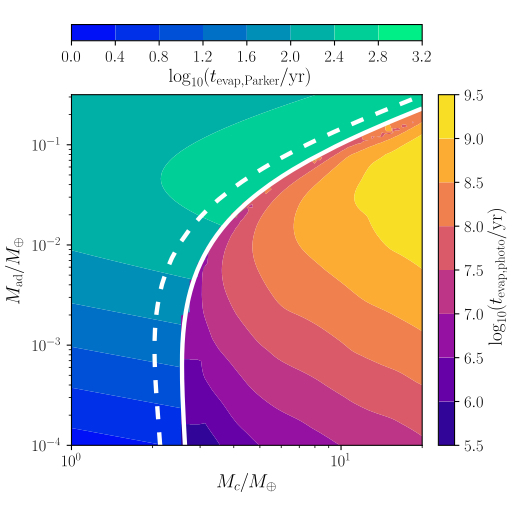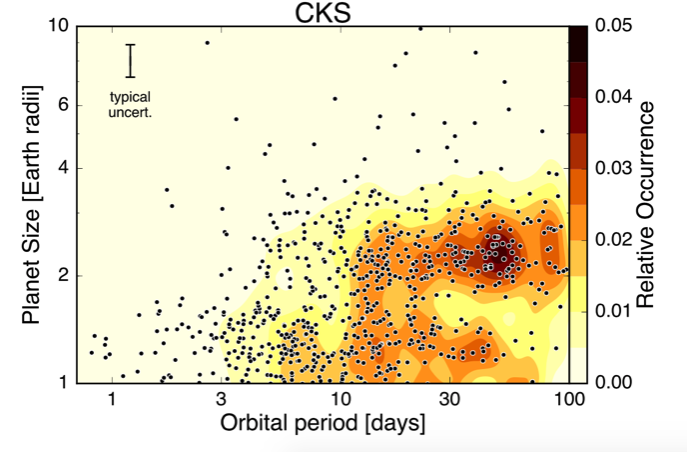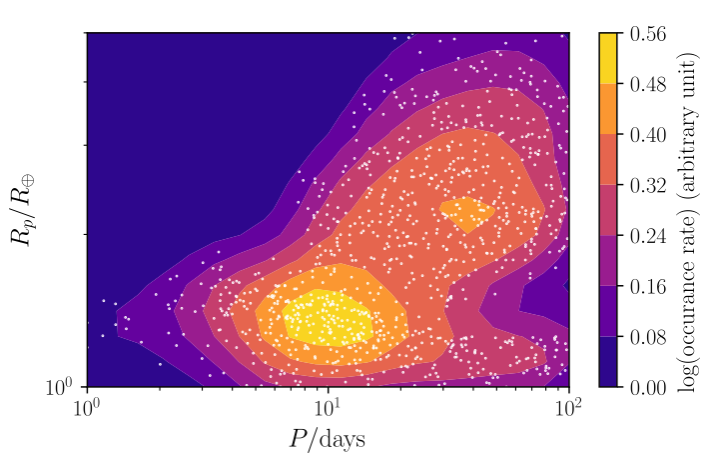Photoevaporation is a leading explanation for the observed bimodal radius distribution of sub-Neptune planets ( see here), we set out to investigate this process in greater detail.
Specifically, we aimed to address the following questions:
1. How important is the detailed microphysics, such as the photo-thermo-chemistry of dust and molecules?
2. Can the ram pressure of a strong stellar wind quench photoevaporation, as suggested by Murray-Clay et al 2009 ?
3. Can high-energy radiation penetrate deeply enough into the atmosphere? If so, which component is more important for driving the outflow: EUV or X-ray?
4. What is the morphology of the outflow? Is it isotropic, and how can we detect it observationally?
Lile Wang and I ( Wang and Dai, 2017 ) carried out axisymmetric hydrodynamic simulations. We incorporated a self-consistent chemical network, since chemical species and their ionization states regulate the heating and cooling processes. The simulations included FUV, EUV, and X-ray photons (7 eV–1 keV), with fluxes and time evolution adopted from Ribas et al 2005. The modeled planets consist of Earth-like cores with convective H/He atmospheres topped by an isothermal layer. Hydrodynamics was computed using Athena++.
Temperature, density, and velocity profiles of a photoevaporating planet. Stellar irradiation enters from the left of the page.
We found that EUV photons are the dominant driver of photoevaporation. The kinetic energy imparted to the gas is approximately hf - ionization energy. In order to escape the gravitational potential of the planet, the photon energy must exceed the threshold required to overcome the planet’s gravitational potential. FUV photons generally lack sufficient energy to do so.
X-rays, while more energetic, play a lesser role. Their smaller interaction cross-sections allow them to penetrate deeper into the atmosphere, where densities are higher. In these regions, collisional excitation and dust efficiently reprocess the energy into infrared radiation that escapes, preventing the gas from reaching temperatures high enough to sustain hydrodynamic outflow.
We also found that stellar wind does not quench photoevaporation. In 1D models, the wind acts as a confining pressure that can suppress outflows if strong enough. In reality, however, stellar wind impacts only the day side. Our 3D simulations show that while the wind redirects the outflow toward the night side, it does not extinguish it.

By carrying out a suite of simulations with varying initial conditions, we mapped the timescale of photoevaporation as a function of core mass, envelope mass fraction, and stellar high-energy flux. We identified three regimes of atmospheric loss:
1. Low-mass planets (< ~3 M⊕): Thermal Parker winds alone prevent them from retaining thick H/He envelopes (>0.01% by mass).
2. Intermediate-mass planets (~3 to ~6 M⊕): On ~100 Myr timescales, when stars still emit strong high-energy radiation, these planets lose a substantial fraction of their atmospheres via photoevaporation.
3. High-mass planets (> ~10 M⊕): Their strong gravity renders them largely resistant to both photoevaporation and Parker winds.
Applying these results to Kepler planets, we successfully reproduced both the observed bimodal radius distribution and the pronounced compositional contrast in the Kepler-36 system (see below).

